In the infrastructure world, data is being produced and circulated at a faster rate than ever before. This trend is referred to as the "5V" - Velocity, Volume, Value, Variety and Veracity.
Individuals are generating online data 10 times faster than before, especially through devices such as smartphones and PCs, producing data 50 times faster. Due to this trend, public cloud storage has already exceeded offline and online enterprise data center storage usage by 2022.
As data increases, storage systems also continue to evolve to handle the workload. Object storage, using RESTful APIs, has become more prevalent, and SSDs, represented by NANDFlash, are replacing HDDs in the cloud market to accelerate data processing speed. In addition, NVMe over Fabric technology is rapidly advancing beyond local NVMe disks. As storage systems are ported to the cloud, Software-Defined Distributed Service (SDS) has become mainstream, and high-performance storage networking technology is thriving.
Since the official release of Pangu 1.0 in 2009, Alibaba Cloud has continuously strengthened its storage service. Alibaba Cloud commercialized Object Storage Service (OSS), which accumulated capabilities through internal services. Alibaba Cloud commercialized NAS and Log Service (SLS) in 2015. Furthermore, with the release of Pangu 2.0, more than 100,000 servers were deployed in a single cluster. In 2018, Alibaba Cloud successfully commercialized Elastic SSD (ESSD) high-performance cloud disks and recorded the availability SLA of OSS at 99.995%.
Alibaba Cloud has demonstrated its commitment to building and providing the most comprehensive storage products and services.
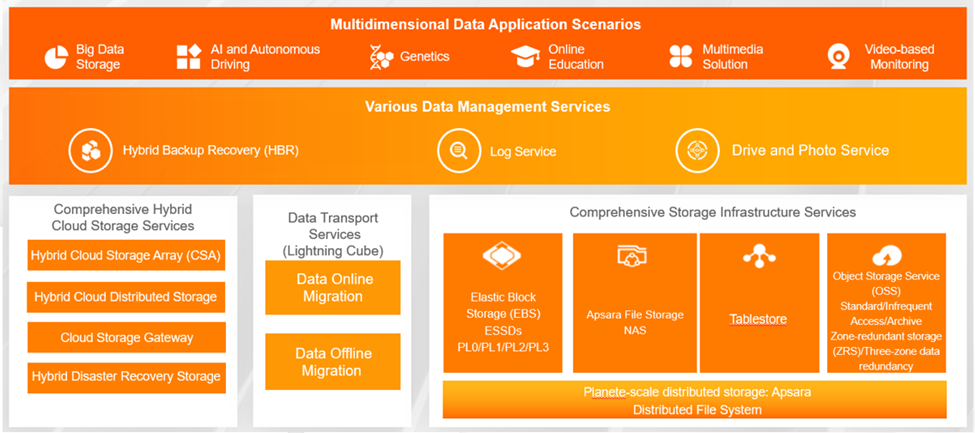
EBS is a block-level storage service that provides short latency, high performance, and stability to ECS. It provides bandwidth (tens of Gbps) and IOPS (random one million) to handle large-scale applications, databases, and more. It meets data protection requirements by using features such as AZ replication and snapshots.
EBS can be created in the same AZ as ECS and used as a system disk or data disk for ECS. Block storage, including EBS, is not typically used for shared purposes, but if the NVMe protocol is used, the multi-attach function can be enabled to allow multiple ECS to be mounted for simultaneous access. This can meet cloud migration requirements for databases like Oracle RAC.
ESSD, which is primarily used, is offered as ESSD PL0 to PL3 based on the performance levels. For the PL3 tier, it can cover workloads such as core databases and EDAs by providing 1 million IOPS and 4 GB/s of throughput. To provide cost-optimized services to customers with high variability in performance requirements, ESSD Auto-PL service has been launched.
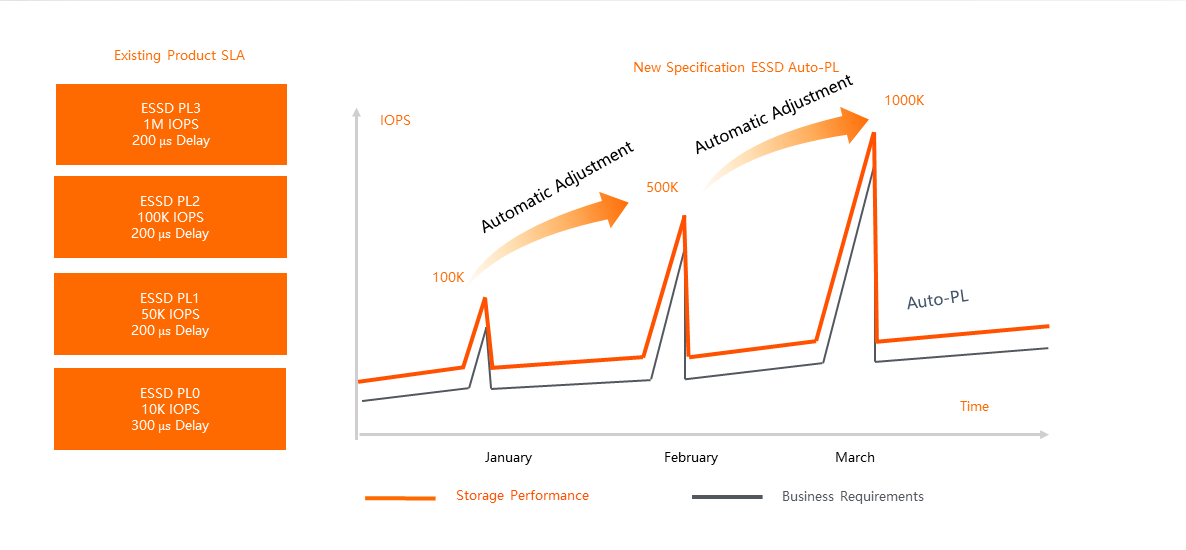
In short, Burstable Disk tunes ESSD to a higher tier automatically to prevent IOPS bottlenecks in storage due to high workloads. Capacity and IOPS allocation are decoupled, and IOPS are automatically burst within the maximum bursting limit according to the workload. Customers are charged only for the amount of IOPS that have been burst. This structure is ideal for customers with extensive workload testing and well-defined categories of MAX and MIN IOPS, making it the optimal product for them.
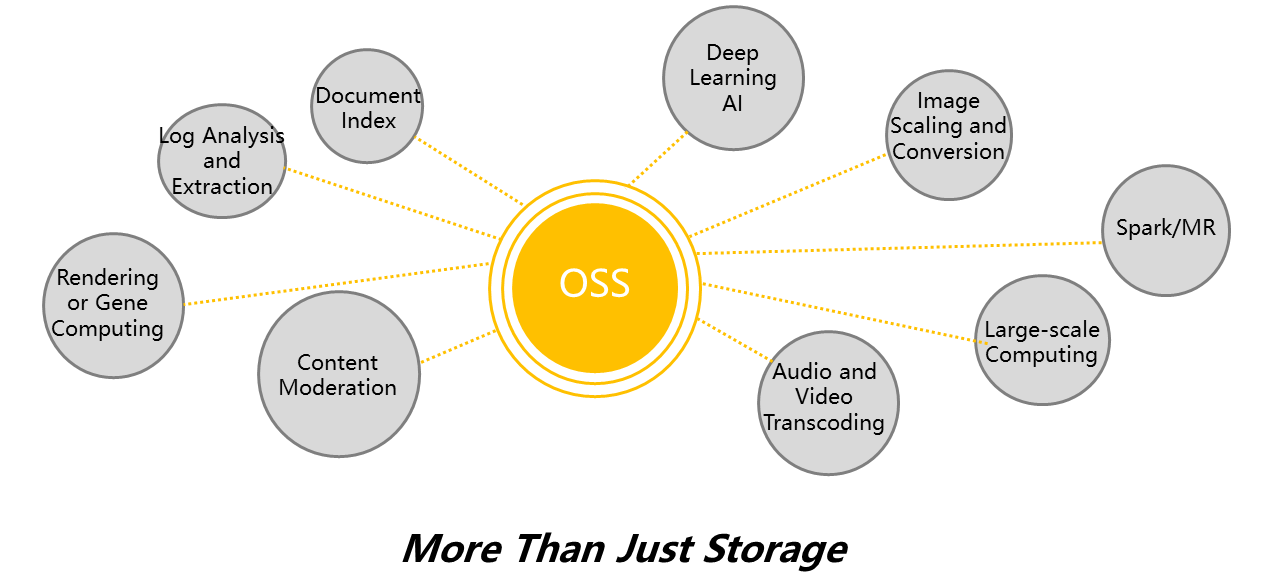
When introducing OSS to customers, we describe it as "more than just simple storage." In addition to the large-capacity storage commonly used for videos and images, OSS can also be used to implement serverless web pages, as well as for backup purposes for resources such as ECS and RDS, and as storage for CDN origin servers.
As OSS has many use cases, it is often implemented in combination with other Alibaba Cloud services. It can also be used to improve efficiency and performance in PRD environments based on architectures previously introduced and built in DEV environments.
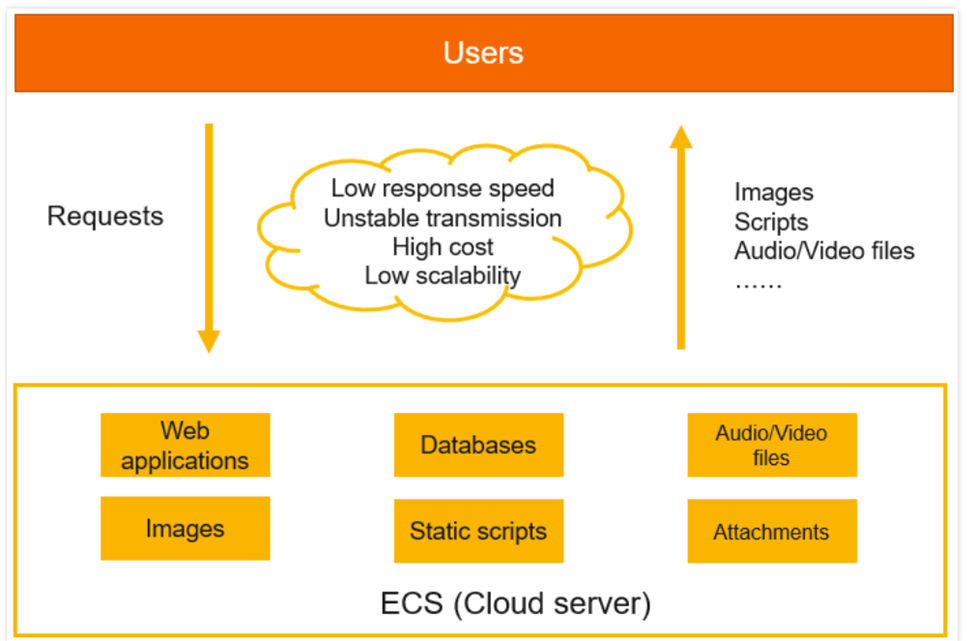
For example, in the architecture of an initial website where static data (such as images and videos) and dynamic data (such as web and DB transactions) are not separated and are processed in batches on ECS, bottlenecks can occur as website access increases. By separating OSS as storage for static data in such a configuration, bottleneck issues caused by data path sharing can be resolved, and by adding caching services using CDN, performance can be further improved.
The following architecture is one that can be implemented, particularly in Asia where Alibaba Cloud has a strong presence in CDN network services.
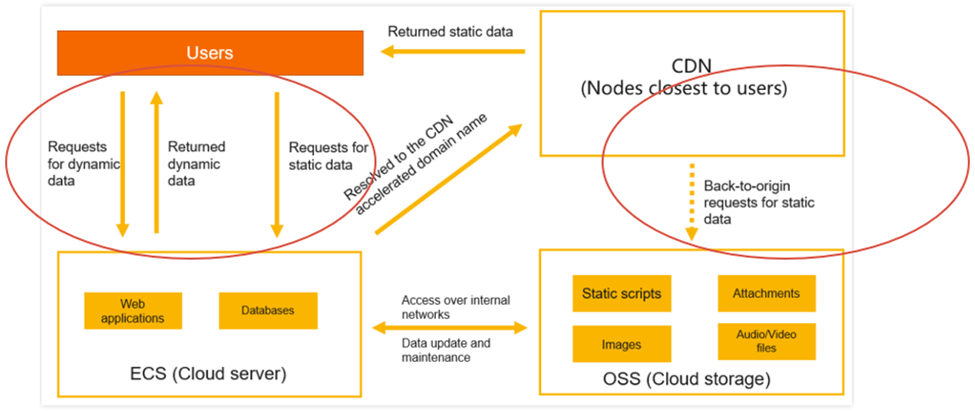
NAS provides shared file storage solutions for thousands of ECS clients while demonstrating high throughput and IOPS file processing performance. It offers flexible capacity expansion and shared access compared to EBS, and when compared to OSS, it shows high-performance READ/WRITE performance.
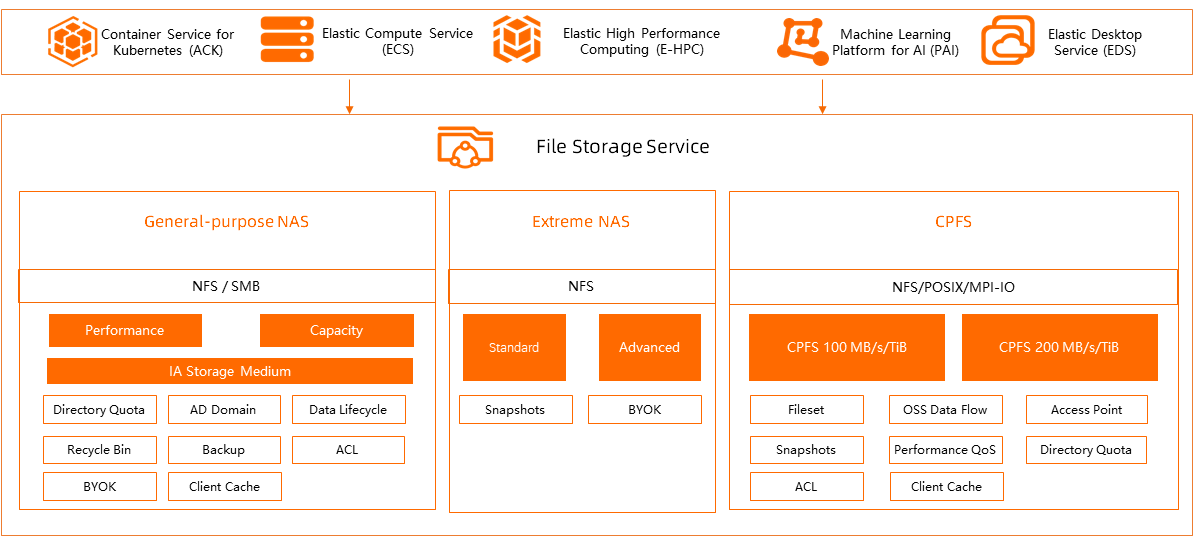
NAS services can also be selected based on performance requirements. For workloads requiring database-level performance, high-performance NAS (20,000 IOPS) is selected, while for parallel computing scenarios requiring performance for I/O operations of millions of small files, the CPFS service is selected.
Tablestore is a fully-managed platform for structured data storage that is cost-effective, highly scalable, and based on shared storage.
It is suitable for processing large amounts of column-based structured data simultaneously for reading and writing and can also be used to improve transaction systems based on MySQL to meet customer requirements.
If a customer's application needs to process a large number of simple Read/Write transactions, Tablestore may be a more suitable solution than RDMS. Additionally, in architectures where MySQL is essential, it is worth considering placing Tablestore in the middle to improve query performance.
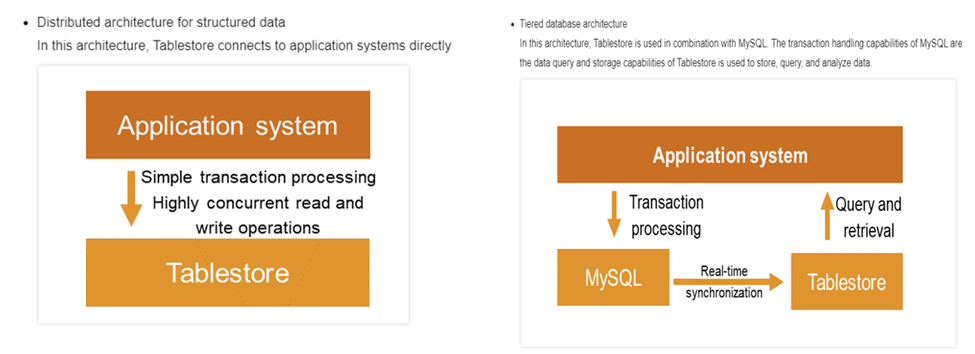
The Log Service is a one-stop log platform for Alibaba Cloud services, supporting one-stop data collection, processing, analysis, visualization, and alerting.
Most existing customers use their own log collection systems, with many cases built using the widely-known ELK combination in open source - Elasticsearch, Logstash, and Kibana. As service and log volume increases, the Operation & Management cost of continuously expanding and managing the ELK cluster also increases. In addition, open source may not fully support aggregation functions, making it difficult to satisfy customer requirements for extracting real-time value from data.
However, logs collected from Alibaba Cloud's Log Service can be seamlessly transmitted to streaming/batch data analysis platforms such as Flink/Spark, enabling quick log analysis to support fast business decision-making. By using Alibaba Cloud Log Service, customers can quickly build a professional log collection/analysis platform with just a few clicks, freeing developers from complex open source management.
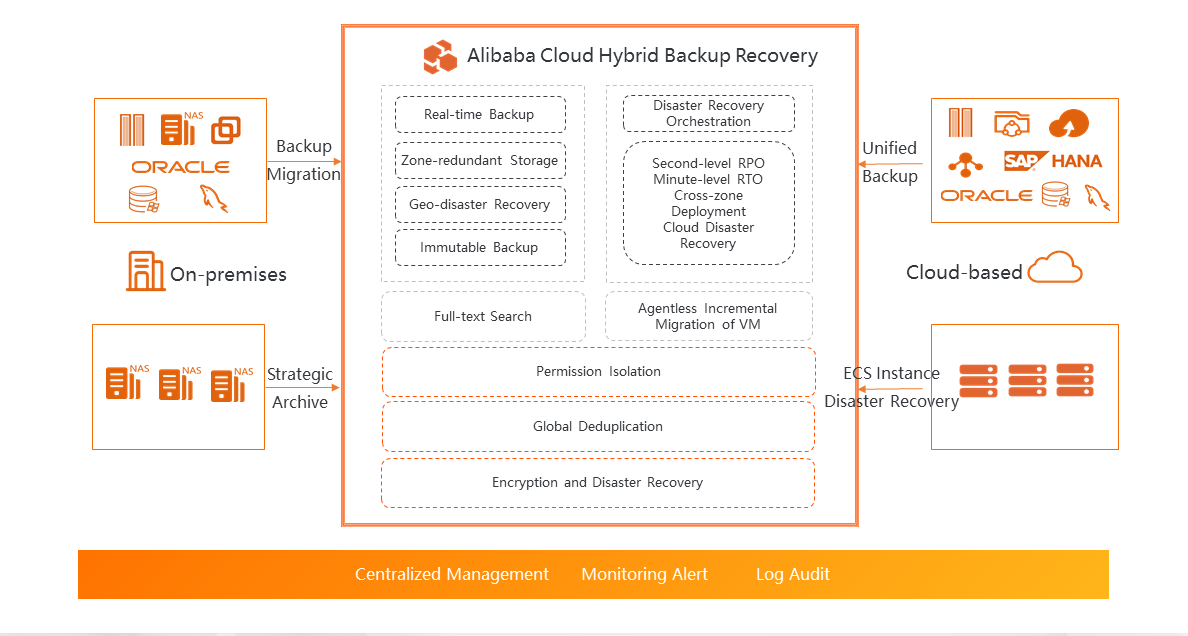
HBR is a storage service that integrates IDC and cloud data for backup. Various functions are available in this architecture, including:
In this article, we have explored key storage solutions from EBS, OSS to HBR. Using storage solutions that do not meet business requirements can lead to performance degradation and wasted costs, as well as a potential failure to adhere to the company's data backup/protection policies. By working with Alibaba Cloud's Solution Architects during the service design phase, customers can select suitable storage services that meet their needs without missing out on VM instances and storage services.
Alibaba Cloud Community - December 28, 2021
ApsaraDB - August 1, 2022
Alibaba Cloud Community - December 14, 2021
Alibaba Cloud Community - October 29, 2024
Alibaba Clouder - July 31, 2020
Alibaba Cloud Community - May 14, 2024
 Storage Capacity Unit
Storage Capacity Unit
Plan and optimize your storage budget with flexible storage services
Learn More Hybrid Cloud Storage
Hybrid Cloud Storage
A cost-effective, efficient and easy-to-manage hybrid cloud storage solution.
Learn More Data Lake Storage Solution
Data Lake Storage Solution
Build a Data Lake with Alibaba Cloud Object Storage Service (OSS) with 99.9999999999% (12 9s) availability, 99.995% SLA, and high scalability
Learn More Hybrid Cloud Distributed Storage
Hybrid Cloud Distributed Storage
Provides scalable, distributed, and high-performance block storage and object storage services in a software-defined manner.
Learn MoreMore Posts by Junho Lee
Dikky Ryan Pratama June 26, 2023 at 12:43 am
Awesome!